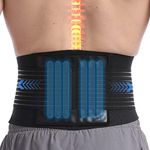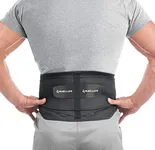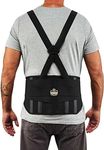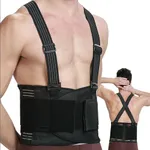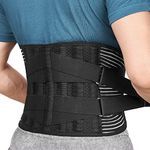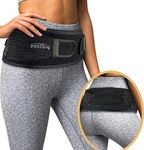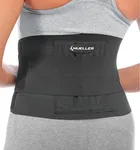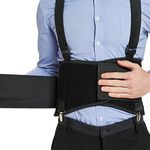Buying Guide for the Best Back Support Belt
Choosing the right back-support belt is important for both comfort and effectiveness, whether you need it for work, exercise, or managing back pain. The best belt for you will depend on your specific needs, such as the level of support required, how often you'll wear it, and your body shape. Understanding the key features will help you make a choice that supports your back without restricting your movement or causing discomfort.Support LevelSupport level refers to how much stability and compression the belt provides to your lower back. This is important because too little support may not help with pain or injury prevention, while too much can restrict movement and weaken muscles over time. Support levels usually range from light (for mild discomfort or posture correction), medium (for moderate support during activities), to high (for injury recovery or heavy lifting). If you need a belt for daily posture improvement or light tasks, a light support belt is usually enough. For more demanding activities or if you have a history of back issues, a medium or high support belt may be better.
Material and BreathabilityThe material of the belt affects comfort, durability, and how much you sweat while wearing it. Breathable materials like mesh or perforated fabrics are important if you plan to wear the belt for long periods or during physical activity, as they help keep you cool and comfortable. Non-breathable materials may offer more rigid support but can get hot and uncomfortable. If you need a belt for all-day wear or exercise, look for breathable options. For short-term use or maximum support, sturdier materials may be suitable.
AdjustabilityAdjustability refers to how easily you can change the tightness or fit of the belt. This is important because a good fit ensures the belt provides proper support without slipping or causing discomfort. Most belts use Velcro straps, buckles, or elastic bands for adjustment. If your waist size changes throughout the day or you want to use the belt for different activities, look for a highly adjustable design. If you prefer a set-and-forget fit, a less adjustable but more structured belt may work.
Width and CoverageWidth and coverage describe how much of your lower back and abdomen the belt covers. Wider belts offer more support and stability, which is helpful for heavy lifting or serious back issues, but they can feel bulky. Narrower belts are less restrictive and more comfortable for everyday use or light support. Consider your intended use: for heavy-duty tasks or injury recovery, a wider belt is better; for posture correction or light support, a narrower belt may be more comfortable.
Ease of UseEase of use means how simple it is to put on, adjust, and remove the belt. This matters because a complicated belt may discourage you from using it regularly. Some belts have simple Velcro closures, while others may have multiple straps or buckles. If you need to take the belt on and off frequently, choose a design that is quick and easy to use. If you only need to put it on once and wear it for a long time, a more complex design may be acceptable.


